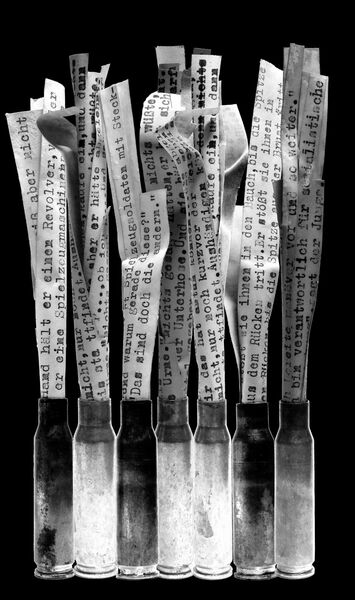Friedenskinder I, 2024
Forgotten Doctrine ( 2025)
https://www.blurb.co.uk/b/12511915-forgotten-doctrine
"Someone who is taking a deep breath will experience the world differently from someone who is being throttled."—Reiner Kunze, 1981
The GDR branded itself a “peace state” even as it embedded military ideology into everyday life. From kindergarten onward, students were trained in discipline, obedience, and a rigid friend–enemy worldview. Programmes like the Snowflake manoeuvres and compulsory pre-military training reinforced this mindset. Since 1962, military service was mandatory, and refusal often meant imprisonment. University admission required a pledge to serve.
As a young teacher in the mid-1980s, I was unexpectedly summoned to the district council. I faced a panel of officials—alongside my headmaster and the parents of a student who had applied to be a professional officer at 14. I was criticised for not promoting him as a role model and questioned about my non-membership in the FDJ. Overwhelmed, I broke down—a moment I never forgot. Years later, I rediscovered a notebook of stories by banned East German writer Reiner Kunze. His work, copied in secret, circulated at great risk. One story, Friedenskinder, became the basis for this piece.
For Friedenskinder I, I cut and rolled copies of my hand-typed text to fit inside 5 cm used rifle shell casings. There are 28 pieces—one for each year the Berlin Wall stood—each around 15 cm high, positioned on a shelf in front of a mirror. Two photographs (44 x 88 cm) accompany the installation.

https://www.blurb.co.uk/b/12511915-forgotten-doctrine
"Someone who is taking a deep breath will experience the world differently from someone who is being throttled."—Reiner Kunze, 1981
The GDR branded itself a “peace state” even as it embedded military ideology into everyday life. From kindergarten onward, students were trained in discipline, obedience, and a rigid friend–enemy worldview. Programmes like the Snowflake manoeuvres and compulsory pre-military training reinforced this mindset. Since 1962, military service was mandatory, and refusal often meant imprisonment. University admission required a pledge to serve.
As a young teacher in the mid-1980s, I was unexpectedly summoned to the district council. I faced a panel of officials—alongside my headmaster and the parents of a student who had applied to be a professional officer at 14. I was criticised for not promoting him as a role model and questioned about my non-membership in the FDJ. Overwhelmed, I broke down—a moment I never forgot. Years later, I rediscovered a notebook of stories by banned East German writer Reiner Kunze. His work, copied in secret, circulated at great risk. One story, Friedenskinder, became the basis for this piece.
For Friedenskinder I, I cut and rolled copies of my hand-typed text to fit inside 5 cm used rifle shell casings. There are 28 pieces—one for each year the Berlin Wall stood—each around 15 cm high, positioned on a shelf in front of a mirror. Two photographs (44 x 88 cm) accompany the installation.




